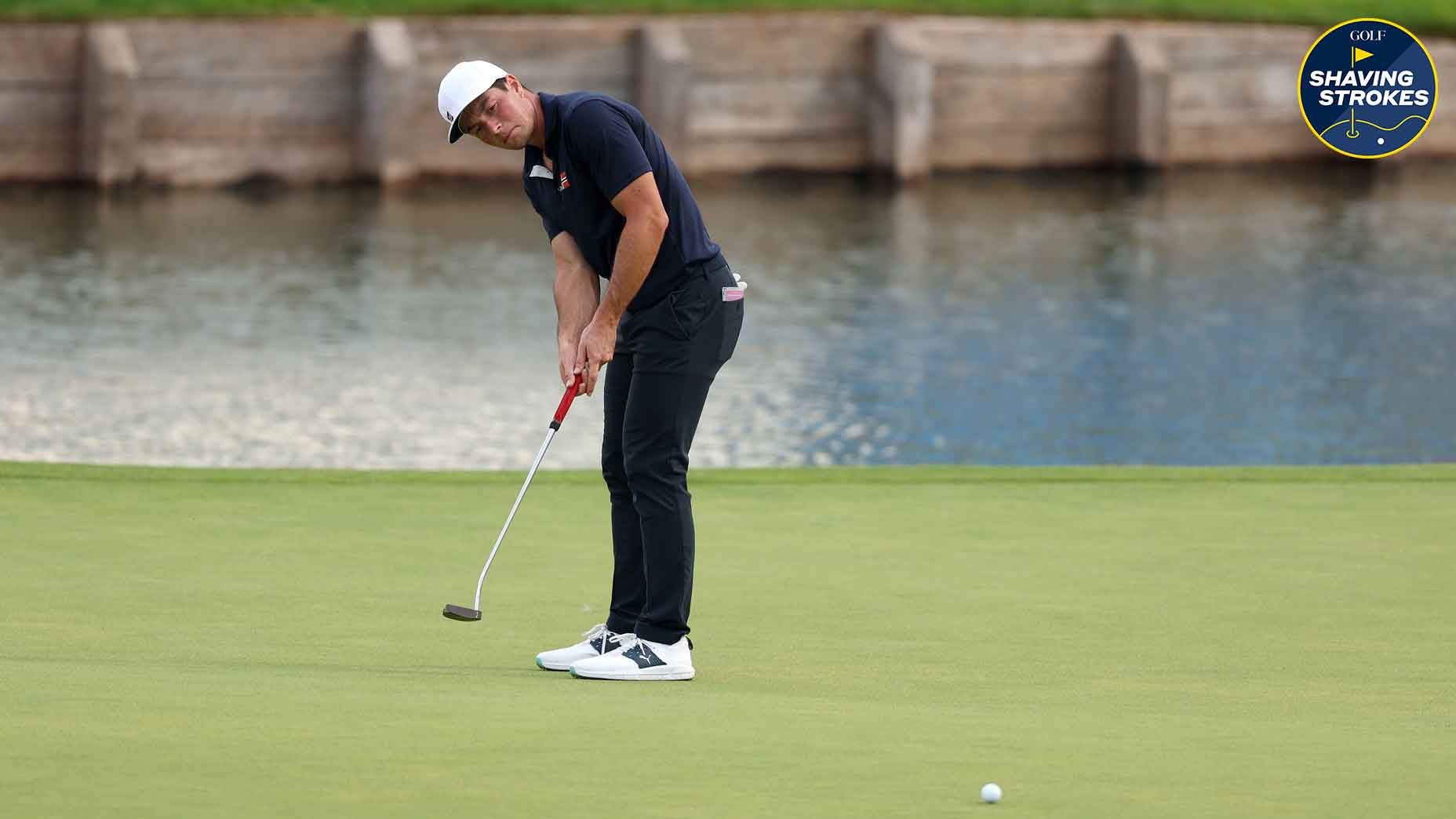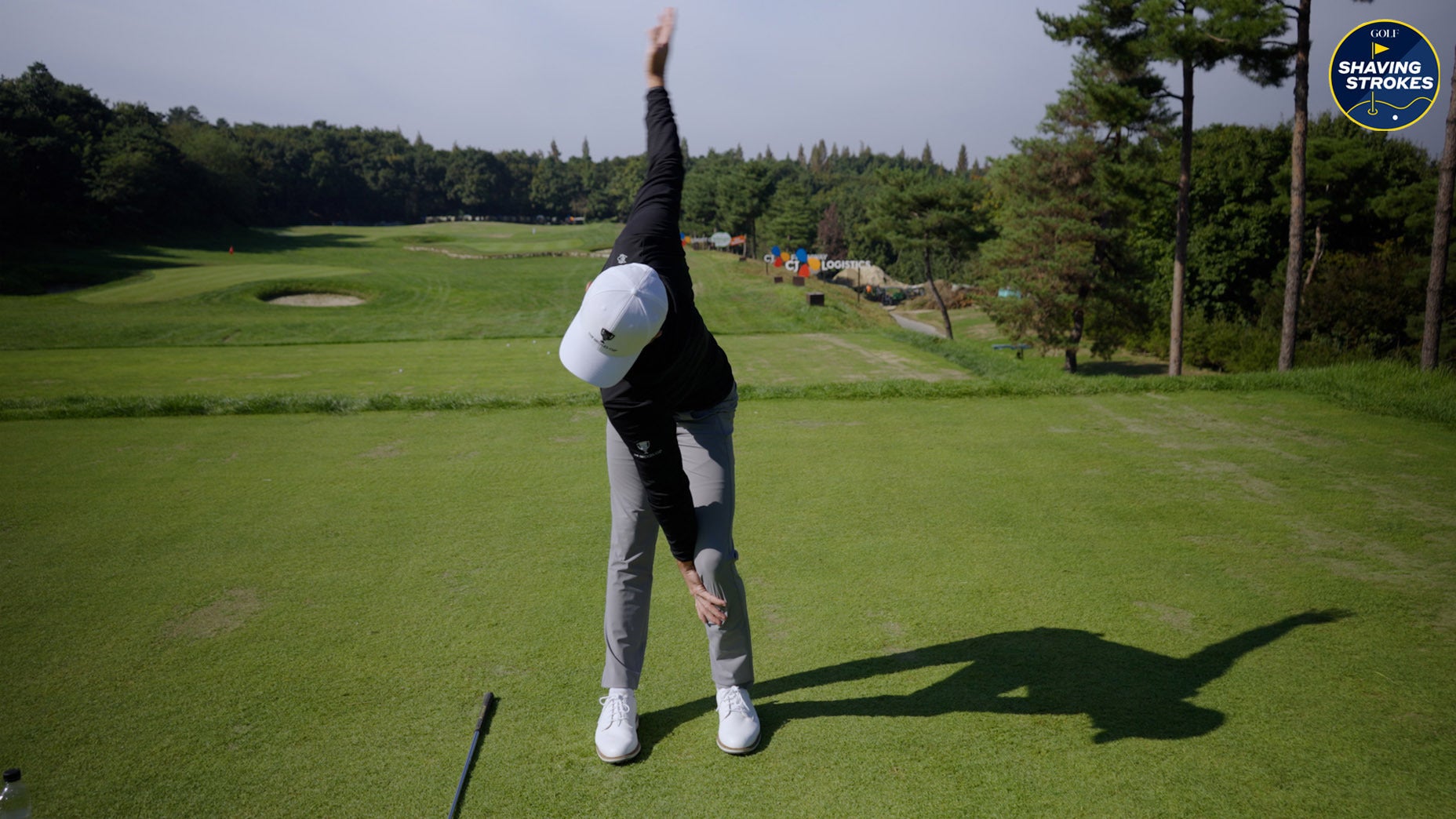6 keys to help you win your next match play event, per top teachers
- Share on Facebook
- Share on Twitter
- Share by Email

What's the secret to dominate match play in golf? A few of our top teacher reveal their favorite tips.
Getty Images
With the Solheim Cup having wrapped up less than a month ago, and Friday matches now underway at the Presidents Cup, golf fans have been enjoying the excitement of match play a lot recently. While these formats showcase top pros competing head-to-head, they also offer a valuable learning opportunity for recreational golfers.
If you watch closely, you can pick up on the clever strategies that Tour players use — and can even use some of them to win your next match play event.
To better explain what these Tour-trusted tendencies are, I consulted four top teachers to share their expertise and insights, as well as a few of their favorite match play tips, all of which will elevate your game. Check them out below!
1. Capture Momentum Early

You’ve likely seen the impact that crowds and momentum can have during a match play competition like the Presidents Cup or Solheim Cup. While your events may not garner large crowds like the pros, the momentum in these matches is just as powerful — which is why GOLF Top 100 Teacher Drew Steckel says it’s crucial to capture that energy early.
Steckel says that, by doing so, the mental battle will be in your favor, forcing your opponent to take risks and step outside their comfort zone to try and get the momentum back on their side.
“Now the ball is in their court to make the mistake because you’ve put the pressure on early,” Steckel says.
A go-to drill to never miss a short putt againBy: Josh Berhow
Capturing momentum early also frees you up mentally, which helps you avoid making emotional decisions or taking low-percentage risks.
So what’s an easy way to build momentum? Steckel says to spend extra time practicing your putting before the round.
“It’s hard to beat somebody that’s putting well,” Steckel adds, “Even if you’re making 15-footers for par to halve the hole, it creates the same feeling as a birdie.”
And if you can make a few strong putts out of the gate, the momentum of the match will be on your side.
2. Don’t keep score
It’s not uncommon for amateurs to keep their score on the side during a match play event, but Steckel explains this can actually draw your focus away from the main goal.
“It’s not about the score, it’s about winning against that opponent,” Steckel says. “Now, you want to do things well and you want to shoot the best score you can, but you’re also not playing individual stroke play.”
Instead, Steckel says to take it a hole at a time and avoid dwelling on the past or getting ahead of yourself. Staying in the moment is key to keeping your competitive edge, and it prevents you from giving up mentally before the hole is over.
3. Stay on offense
One of the quickest ways to lose a match is to play defensively. But according to GOLF Top 100 Teacher Trillium Rose, for amateurs, this doesn’t always mean being aggressive with your strategy.
“When we look at Mark Broadie’s research, it’s the approach shots that make a big difference in scoring,” Rose says. “I call those the offensive shots. You’re going after the pin, as opposed to defense where you’ve missed the green and now you have to catch up and avert a bad number.”
For Tour pros, offensive shots can look like taking a risky line to the pin, or going for a par-5 in two, and you’ll see a lot of that this weekend at the Presidents Cup. But for the average golfer, this can be as simple as hitting the green because you’ve properly accounted for the elements, like wind, temperature or slope.
Rose says you can refine these scoring shots by focusing on two things.
First, select the shot and club with the highest chance of success. Sticking to the shots you know will keep your confidence high and help you avoid big mistakes that could be costly.
The second is to prioritize making a smooth swing with solid contact. When you generate consistent, center-face contact, Rose says that you maximize the performance of your clubs. This increases your chances of hitting the green and helps you stay on the offense.
4. Assume your opponent is going to make everything

When you watch the pros, you’ll notice that the strongest match play competitors are the ones who aren’t easily distracted or shaken by their opponents. The same can be said for amateur golfers — and a great way to build up your mental game before a match is to shift the focus away from your opponent.
It might sound counterintuitive, but GOLF Teacher to Watch Rick Sessinghaus says that shifting focus away from your opponent helps you stay in the moment and concentrate on the controllables.
A great way to do that is to assume your opponent is going to make everything. By assuming they bring their A-game, Sessinghaus says it’ll help you avoid getting too confident or too far ahead of yourself before knowing the outcome of the hole. This is also a clever way to stay calm and composed on the course.
“Assume they’re going to make a great shot, and assume they’re gonna make the long par putt,” Sessinghaus says. “Then you’re not surprised, and it doesn’t rattle you when they do.”
5. Master ‘stoplight’ golf
Knowing when to strike and when to pull back is a skill, and one that you’ll see the pros demonstrate this weekend during the Presidents Cup. If you want to improve your risk analysis into the greens, GOLF Top 100 Alumni Tom Patri says to use his simple rule of thumb.
According to Patri, there are three types of hole locations you’ll encounter on the course. The first is a red hole location, which are pins that shouldn’t be attacked because the risk doesn’t outweigh the reward — like pins with little green to work with, or that are protected by bunkers or hazards on the sides.
A next type is a yellow hole location, which requires some strategy before deciding what shot to hit. This varies depending on how confident you are in the shot, and where you are in the match. Patri says to consider your shot shape and the odds of you pulling off that type of shot. If it’s outside of your comfort zone, or you’re up in the match, you may not need to take the risk. However, if you’re down a few points or it plays into your natural ball flight, Patri says playing aggressive is OK.
3 common swing position faults — and how to fix themBy: Kevin Sprecher, Top 100 Teacher , Nick Dimengo
The last type of hole location is a green flag, which are pins that you should always attack. Typically, these hole locations will be closer to the center of the green, or are located away from potential hazards. But just because the hole location is a green, doesn’t automatically make it easier or mean it’s guaranteed you’ll score par or better. These should be treated with the same amount of focus that you would give a more difficult pin.
Patri’s “stoplight” method is a good way to simplify your decision-making process and hone in on your game, not your opponents.
“You can’t be enamored or intimidated by a player that has different strengths than you,” Patri says. “Generally, those situations lead to a loss of the hole, so you’ve got to play to your strengths when you’re trying to score.”
6. Reframe your mindset
Most average golfers view nerves on the golf course as a negative thing. But according to Sessinghaus, with the right frame of mind, nerves can actually become a strength. He references one of the players he works with, Collin Morikawa.
“Collin actually likes to be nervous, and he likes pressure because it actually enhances his focus,” Sessinghaus says.
So how can you learn to embrace these feelings and stop viewing pressure as something to avoid?
Sessinghaus says the first step is to reframe your mindset. When you view high-pressure situations as a negative thing, you subconsciously create a threat. This causes your brain to tell your body to produce a stress response — otherwise known as a fight or flight reaction. Often leading to tight muscles or speeding up your process.
Instead of thinking about what could go wrong, think of high-pressure shots as a challenge that you’re excited to take on.
Sure, you’ll still feel some adrenaline — maybe an elevated heart-rate or some butterflies in your stomach — but Sessinghaus says to remember that these aren’t bad things.
“Enjoy the adrenaline, and enjoy being a little uncomfortable,” Sessinghaus says. “That’s a cool feeling that you don’t normally have, and those are [often] signals that it’s important.”
The second step of learning to embrace your nerves is focusing on what’s relevant and what you can control, like your breathing.
Sessinghaus says a great breathing exercise to use is to breathe in for three counts, then exhale for six counts. This short-to-long breathing technique helps to activate your parasympathetic response, he adds, which is responsible for slowing your heart-rate and relaxing your muscles — both of which are key when it comes to executing an important shot.

Voice Caddie VC4 Golf GPS
$129.99
View Product
Latest In Instruction

Golf.com Editor











